Buy Tramadol Online: A Comprehensive Guide to Understanding, Purchasing, and Using Tramadol Safely
Tramadol is a widely used prescription medication for the treatment of moderate to severe pain. Its ability to manage pain, especially in individuals suffering from chronic pain conditions, has made it a go-to option for doctors and patients alike. However, the process of obtaining tramadol online, the risks involved, and the legal implications require careful consideration. This article will provide an in-depth look at tramadol, its uses, the potential risks, and a comprehensive guide on how to buy tramadol online safely.
What is Tramadol?
Tramadol is a synthetic opioid pain medication that works by affecting the way the brain and nervous system respond to pain. It is commonly prescribed for individuals with moderate to severe pain, such as those recovering from surgery, injury, or those living with chronic pain conditions like osteoarthritis, fibromyalgia, and lower back pain.
The medication is available in various forms, including tablets, capsules, and extended-release formulations, and is often prescribed to help manage pain when non-opioid pain relievers, such as acetaminophen or ibuprofen, are not effective.
Tramadol works by binding to the brain’s opioid receptors and inhibiting the reuptake of norepinephrine and serotonin, two neurotransmitters involved in pain perception. By doing so, tramadol provides relief from pain, helps alleviate discomfort, and can improve a patient’s quality of life.
However, tramadol is a controlled substance, meaning it has the potential for abuse, dependence, and addiction, especially if not used as prescribed. This is why the legality of purchasing tramadol, particularly from online sources, can be a complex matter.
Why People Buy Tramadol Online
As more people turn to the internet to purchase medications for convenience, it’s not surprising that the demand for tramadol online has increased. Some of the key reasons individuals opt to buy tramadol online include:
1. Convenience and Privacy
For many, purchasing tramadol online offers an unmatched level of convenience. Instead of visiting a doctor’s office and a pharmacy, patients can obtain their prescription medication from the comfort of their home. This is particularly advantageous for those with busy schedules, limited mobility, or who live in areas where pharmacies are not easily accessible.
Additionally, purchasing tramadol online offers a sense of privacy. Some individuals may be uncomfortable discussing pain management or opioid medications with a doctor or pharmacist, and online purchases provide a discreet method of obtaining the medication without needing to interact with others.
2. Competitive Prices
In some cases, individuals find that buying tramadol online can be more affordable than purchasing it from a traditional pharmacy. Online pharmacies may offer lower prices, especially when purchasing tramadol in bulk or when generic versions are available. These cost savings are a significant draw for many individuals, particularly for those who require long-term pain management and are concerned about the high cost of medications.
3. Access to Generic Forms
Tramadol is available in both branded and generic forms. While the branded version of tramadol (Ultram) can be expensive, the generic version, which is often sold under the name tramadol hydrochloride, is typically more affordable. Many online pharmacies offer generic tramadol, making it an attractive option for patients seeking more cost-effective pain relief.
4. Availability in Countries with Less Stringent Regulations
In some countries, it is easier to purchase tramadol online due to less stringent regulatory oversight. For example, some countries allow the sale of tramadol without a prescription or with a less stringent prescription process. As a result, individuals from countries where tramadol may be more difficult to access through traditional means may turn to online pharmacies to fill their prescriptions.
The Legal Implications of Buying Tramadol Online
It is essential to understand the legal aspects of buying tramadol online before making a purchase. Tramadol is classified as a controlled substance in many countries, including the United States, because of its potential for abuse and addiction.
1. Controlled Substance Regulations
In the United States, tramadol is classified as a Schedule IV controlled substance by the Drug Enforcement Administration (DEA). This means that tramadol is subject to strict regulations, and its sale and distribution are closely monitored by the government. It is illegal to purchase tramadol without a valid prescription from a licensed healthcare provider.
Many online pharmacies that claim to sell tramadol without requiring a prescription are operating illegally. It is important to be cautious when buying tramadol online, as purchasing from these unregulated sources can expose individuals to legal consequences, counterfeit products, and potential health risks.
2. International Laws
If you’re purchasing tramadol from an international source, it is crucial to understand the import laws of your country. Some countries may allow individuals to buy tramadol online from international sources with fewer restrictions, while others may have stricter import regulations, especially regarding controlled substances. In some cases, customs may seize packages containing tramadol if they are not accompanied by the proper documentation.
3. Prescription Requirements
In most countries, including the U.S., a valid prescription is required to obtain tramadol legally. Buying tramadol without a prescription is not only illegal, but it can also lead to significant health risks. Purchasing tramadol from an online pharmacy that does not require a prescription is a red flag and may indicate that the website is operating outside of legal boundaries.
Some online pharmacies claim to offer tramadol without a prescription or offer a “consultation” that allows individuals to bypass the prescription requirement. This practice is often illegal and can put your health at risk, as it may involve the sale of counterfeit or substandard medications.
How to Buy Tramadol Online Safely
If you have a valid prescription for tramadol and wish to buy it online, it is important to follow these steps to ensure that you are purchasing from a safe and legal source.
1. Consult a Healthcare Provider
Before purchasing tramadol online, always consult with a healthcare provider. A doctor can evaluate your health condition and determine whether tramadol is the right medication for your needs. They can also provide you with a valid prescription, which is required for purchasing tramadol legally from an online pharmacy.
2. Choose a Reputable Online Pharmacy
When buying tramadol online, it is essential to select a legitimate and licensed online pharmacy. Look for pharmacies that require a valid prescription and that have been accredited by regulatory bodies such as the National Association of Boards of Pharmacy (NABP) in the United States or the General Pharmaceutical Council (GPhC) in the United Kingdom.
Reputable online pharmacies should clearly display their credentials and contact information. They should also offer secure payment methods and have clear privacy policies regarding your personal information.
3. Verify Secure Payment Methods
Always ensure that the online pharmacy uses secure payment methods, such as credit cards, PayPal, or other trusted payment options. Avoid websites that request payments via untraceable methods, such as wire transfers or cryptocurrency, as these can be indicative of fraudulent or illegal operations.
4. Check for Customer Reviews
Before placing an order, read reviews from previous customers to gauge the reliability and trustworthiness of the online pharmacy. Look for feedback that mentions the pharmacy’s professionalism, delivery times, and product quality. Be cautious of online pharmacies that have limited or negative reviews, as these may be signs of scams or poor service.
5. Avoid Websites That Don’t Require a Prescription
A legitimate online pharmacy will always require a prescription for tramadol. Be cautious of websites that offer tramadol without asking for a prescription, as these sites are often operating illegally and may be selling counterfeit or dangerous medications.
Potential Risks of Buying Tramadol Online
While buying tramadol online may offer convenience, it also carries certain risks. These include:
1. Counterfeit Medications
One of the biggest risks of buying tramadol online is the possibility of receiving counterfeit or substandard medications. Counterfeit drugs can be ineffective or dangerous, as they may contain harmful substances or incorrect dosages. In some cases, counterfeit tramadol can cause severe health complications, including overdose, organ damage, or death.
2. Legal Consequences
Purchasing tramadol without a prescription is illegal in many countries, and individuals who engage in this practice may face legal consequences, including fines, criminal charges, or imprisonment. Additionally, importing tramadol from unregulated sources may result in confiscation by customs authorities.
3. Health Risks
Taking tramadol without proper medical supervision can lead to serious health risks. Side effects of tramadol can include dizziness, nausea, constipation, and headache. In some cases, tramadol can cause more severe reactions, such as seizures, breathing difficulties, and addiction.
4. Drug Interactions
Tramadol can interact with other medications, especially antidepressants, antipsychotics, and benzodiazepines. These interactions can increase the risk of side effects or reduce the effectiveness of either medication. It is important to inform your doctor about all medications you are taking before starting tramadol to avoid potentially dangerous interactions.
Alternatives to Tramadol
While tramadol can be an effective pain management solution, there are several alternatives that may be worth considering. These include:
1. Non-Opioid Pain Relievers
Over-the-counter pain relievers, such as acetaminophen (Tylenol) or nonsteroidal anti-inflammatory drugs (NSAIDs) like ibuprofen (Advil) and naproxen (Aleve), can be effective for managing mild to moderate pain. These medications typically have fewer side effects than opioids and may be a safer option for individuals with chronic pain.
2. Physical Therapy
Physical therapy can help improve mobility, reduce pain, and strengthen muscles and joints. It is often recommended for individuals with musculoskeletal pain, including back pain and arthritis. A physical therapist can develop an individualized exercise plan to address your specific pain and improve your overall function.
3. Alternative Therapies
Alternative therapies, such as acupuncture, massage therapy, and chiropractic care, may offer relief from certain types of pain. These treatments focus on addressing the root cause of pain and promoting overall wellness.
4. Other Prescription Pain Medications
If tramadol is not effective or causes unwanted side effects, your doctor may prescribe other pain medications, such as non-opioid pain relievers, muscle relaxants, or even stronger opioids if necessary.
Conclusion
Tramadol can be an effective pain relief option for individuals suffering from moderate to severe pain. However, purchasing tramadol online requires caution, as there are significant legal and health risks associated with obtaining the medication from unregulated sources. It is essential to consult with a healthcare provider, obtain a valid prescription, and choose a reputable online pharmacy to ensure that you are purchasing tramadol safely and legally.

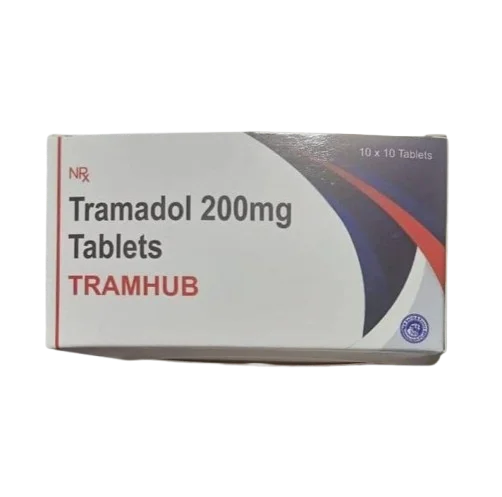
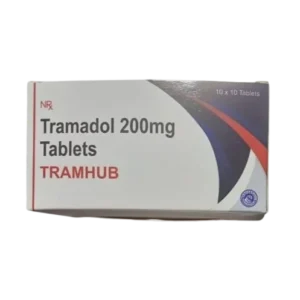
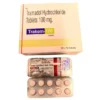



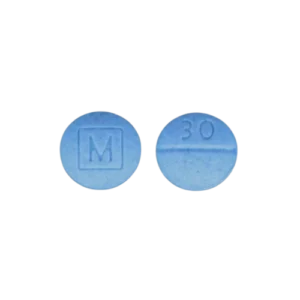
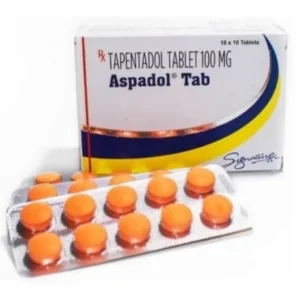
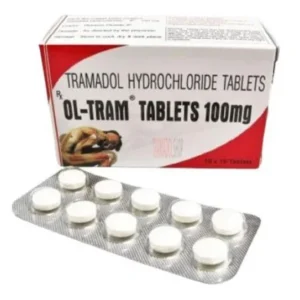
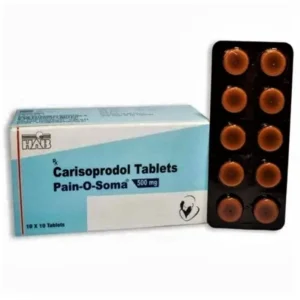
Reviews
There are no reviews yet.